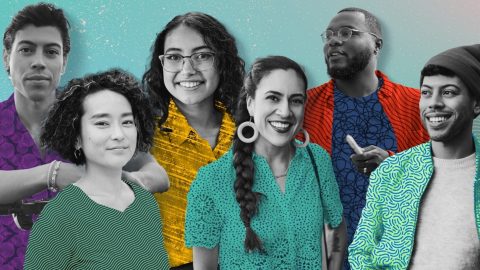Takeaways from the 2018 CSUN Assistive Technology Conference
Last week concluded the 33rd annual CSUN Assistive Technology Conference, a gathering of leaders and change-makers working to make technology more accessible. This year’s conference was filled with thought-provoking sessions and impactful demonstrations from experts in academia, advocacy organization, government agencies and businesses.
It’s an honor to be involved in this event, and this year was a record year for us. With over 80 people from Microsoft in attendance, we were able to host 23 sessions – a record – lead by engineers, program managers and researchers to showcase our latest accessible technology at our booth at the Grand Hall. We were so grateful for all the questions, comments and feedback gained throughout the conference, especially at our reception. We took away reams of feedback and nuggets of joy from experts across the industry. Every bit will help us on the journey to empower all people and organizations to achieve more.
Jenny Lay-Flurrie, chief accessibility officer at Microsoft, kicked off with a talked about the progress to make Microsoft’s products and services more accessible. From inclusive hiring initiatives to technology for school, work and home, we are making progress towards are initiative to empower more people to achieve their goals.
Highlights
- Making education more accessible was a key theme with discussions around tactics and resources for engaging students with disabilities. Microsoft demoed Project Torino, which is focused on developing a physical programming language for teaching computational thinking skills and basic programming concepts to children ages 7–11 who are blind or have low vision.
- Swetha Machanavajhala discussed her work on the Hearing AI app for people that are deaf or hard-of-hearing. It leverages Microsoft’s artificial intelligence platform to deliver visualized audio for your environment.
- Some sessions offered a look at exploratory uses of virtual and augmented reality in the classroom or for therapy purposes, as well as the presence of many wearables and head-mounted displays, such as the Windows Mixed Reality Headsets, in the Expo Hall.
- Several speakers addressed the importance of including people with disabilities in the review process during product development. If you want to make products that work for everyone, you need real feedback from a diverse set of customers. Megan Lawrence discussed the new Accessibility User Research Collective, a partnership between Microsoft and the Shepherd Center to improve the quality and quantity of user feedback from the disability community.
- You can find all of the presentation decks from Microsoft’s CSUN 2018 sessions right here.

One of the high points of the event for many attendees was the opportunity to meet world-renowned musician, Stevie Wonder. He is a fan of the power of technology to change the world for people with sight loss, and met folks from Seeing AI (which he is a fan of!) and Soundscape. It was great to see his support for Microsoft, attendees of the conference and the role that technology can play to empower people with disabilities.
On behalf of the entire Microsoft Accessibility team, we’d like to thank CSUN for hosting another incredible event. We left deeply inspired and were thrilled to speak with so many attendees who stopped by our booth, participated in our sessions and participated in our reception. The insightful feedback we gain from events like CSUN are invaluable as we work on the next phase of our accessibility journey at Microsoft. Please keep it coming!








